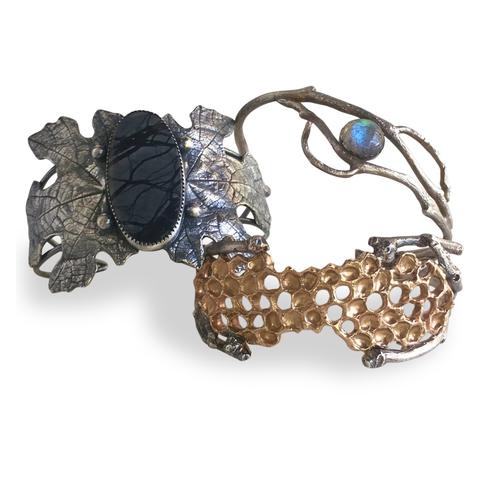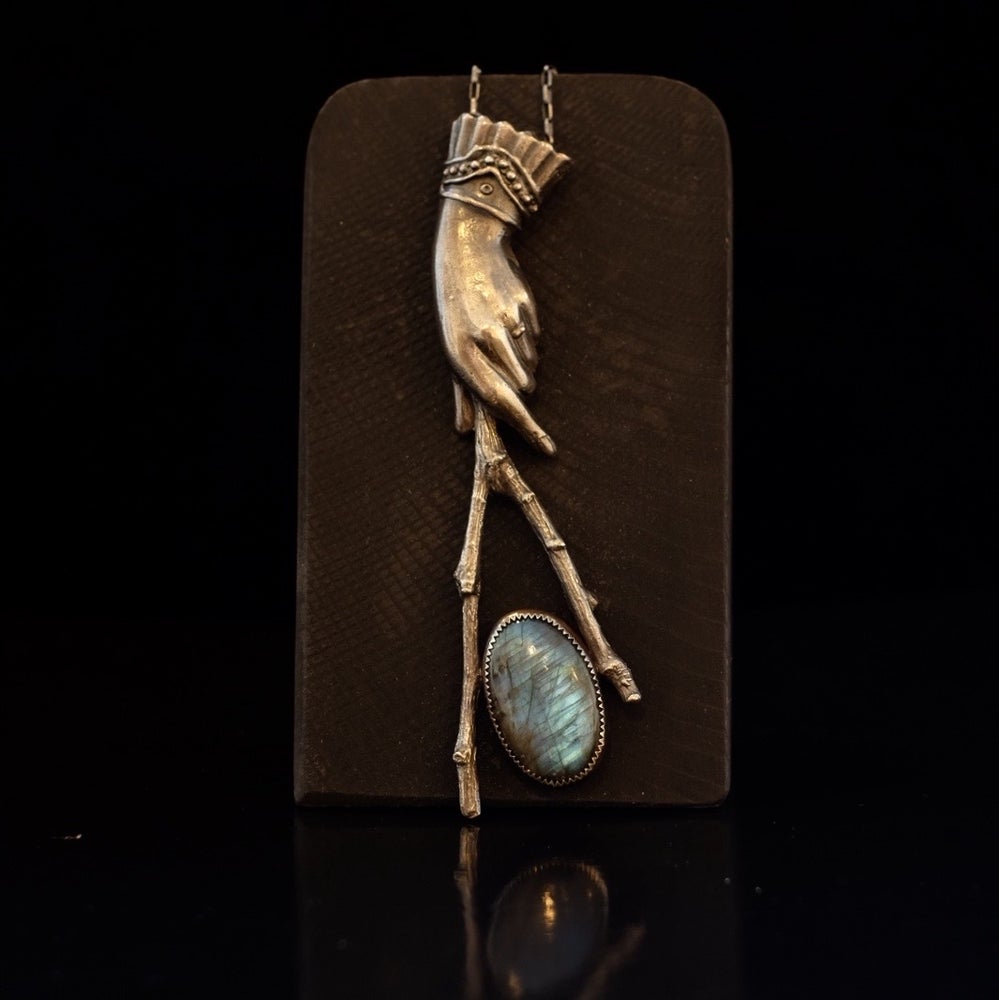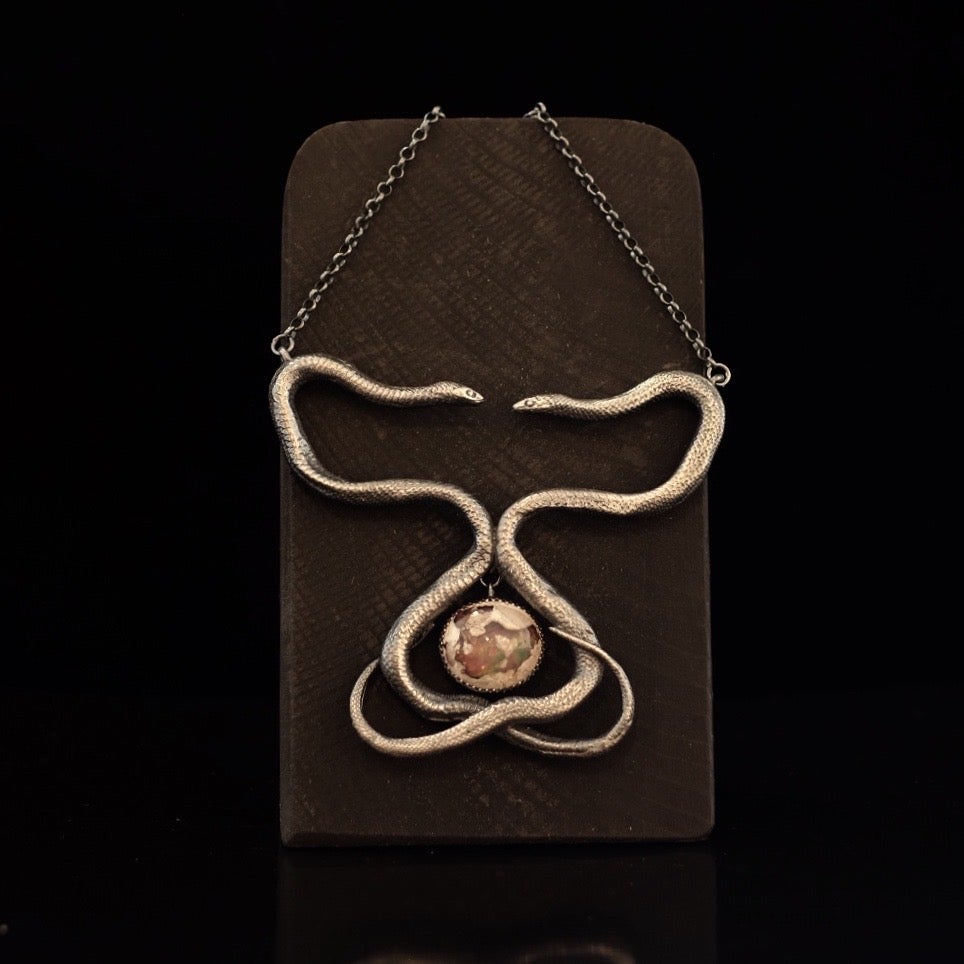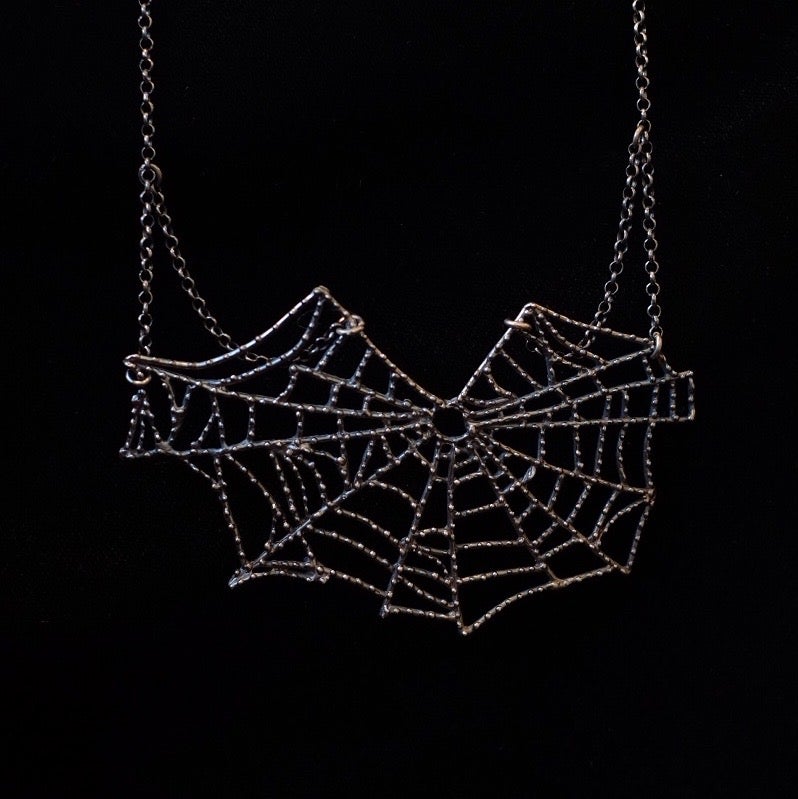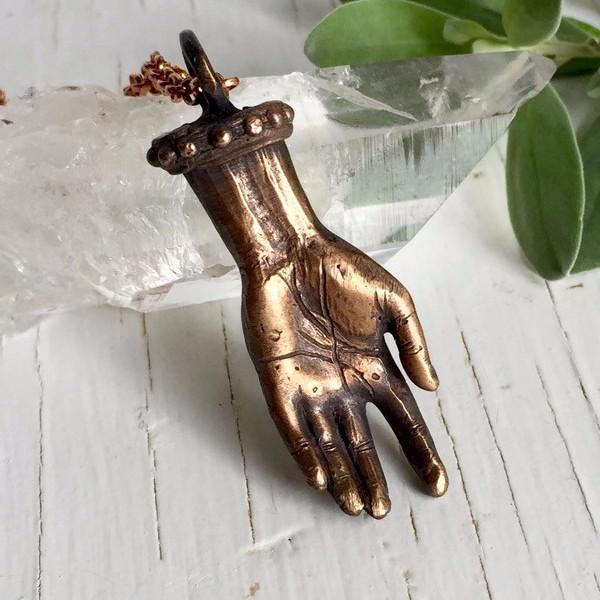b
Throwing the Stones: Jewelry by Chase + Scout
Informed by the natural world, hidden microcosms, and the talismanic properties of primitive rites and objects, Austin-based Chase and Scout creates unique, beautiful, and unsettling jewelry pieces such as the datura seed pod necklace below. The natural and the supernatural combine in their art self-described thus: “It is a shared secret between cohorts of common causes, or an answer to an unasked question. It is the sound of moonlight swimming through a dark night, or a deep howl…” Wolf’s-teeth earrings, rings inspired by the texture of the lunar landscape, honeycomb pieces, bracelets with the skulls of Odin’s two ravens, and moth orchid necklaces are others among their varied offerings. From cicada wings to dowsing rods and the Orphic Egg, the concepts for Chase and Scout’s wearable art are endlessly creative.
